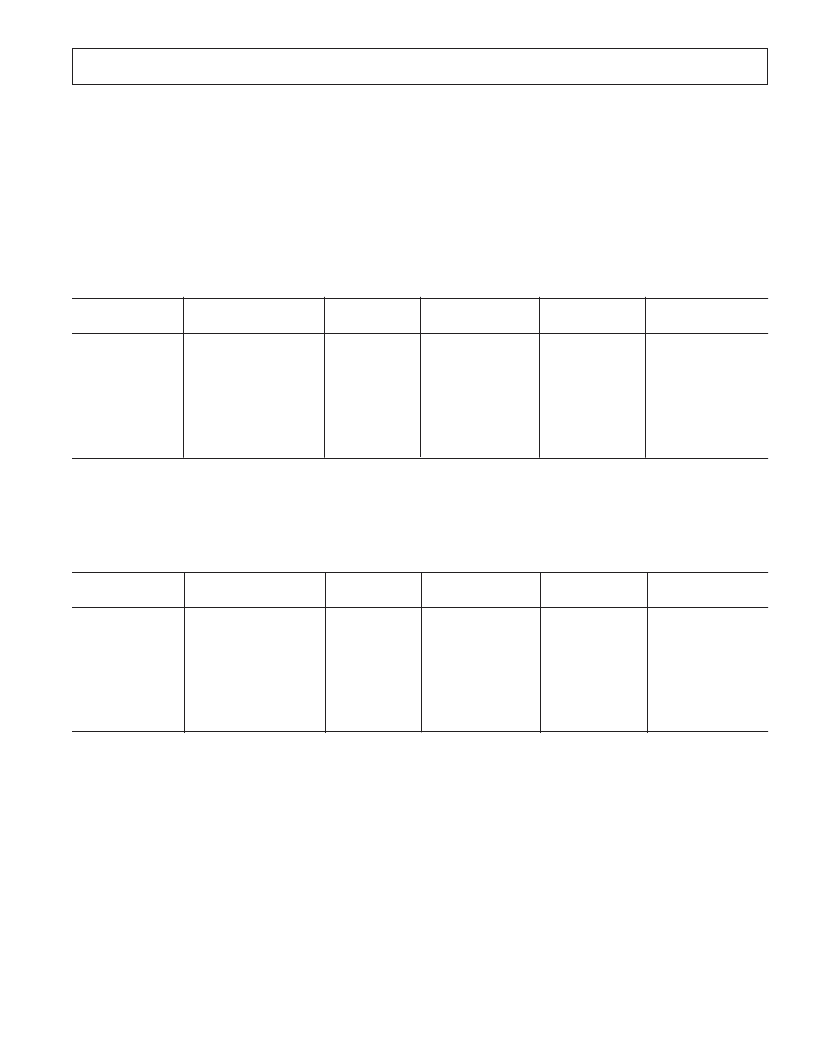- 您現在的位置:買賣IC網 > PDF目錄374047 > ADV7192 (Analog Devices, Inc.) Video Encoder with Six 10-Bit DACs, 54 MHz Oversampling and Progressive Scan Inputs PDF資料下載
參數資料
| 型號: | ADV7192 |
| 廠商: | Analog Devices, Inc. |
| 英文描述: | Video Encoder with Six 10-Bit DACs, 54 MHz Oversampling and Progressive Scan Inputs |
| 中文描述: | 視頻編碼器與六10位DAC,54兆赫采樣和逐行掃描輸入 |
| 文件頁數: | 13/69頁 |
| 文件大小: | 664K |
| 代理商: | ADV7192 |
第1頁第2頁第3頁第4頁第5頁第6頁第7頁第8頁第9頁第10頁第11頁第12頁當前第13頁第14頁第15頁第16頁第17頁第18頁第19頁第20頁第21頁第22頁第23頁第24頁第25頁第26頁第27頁第28頁第29頁第30頁第31頁第32頁第33頁第34頁第35頁第36頁第37頁第38頁第39頁第40頁第41頁第42頁第43頁第44頁第45頁第46頁第47頁第48頁第49頁第50頁第51頁第52頁第53頁第54頁第55頁第56頁第57頁第58頁第59頁第60頁第61頁第62頁第63頁第64頁第65頁第66頁第67頁第68頁第69頁

ADV7192
–
13
–
REV. 0
Table I. Luminance Internal Filter Specifications (4 Oversampling)
Passband
Ripple
1
(dB)
3 dB Bandwidth
2
(MHz)
Stopband
Cutoff
3
(MHz)
Stopband
Attentuation
4
(dB)
Filter Type
Filter Selection
MR04 MR03 MR02
0
0
0
0
0
1
0
1
1
0
1
0
1
1
Low-Pass (NTSC)
Low-Pass (PAL)
Notch (NTSC)
Notch (PAL)
Extended (SSAF)
CIF
QCIF
0
1
0
1
0
1
0
0.16
0.1
0.09
0.1
0.04
0.127
Monotonic
4.24
4.81
2.3/4.9/6.6
3.1/5.6/6.4
6.45
3.02
1.5
6.05
6.41
8.03
8.02
8.03
5.04
3.74
–75.2
–64.6
–87.3
–79.7
–86.6
–62.6
–88.2
NOTES
1
Passband Ripple is defined as the fluctuations from the 0 dB response in the passband, measured in (dB). The passband is defined to have 0–fc frequency limits for a
low-pass filter, 0–f1 and f2–infinity for a notch filter, where fc, f1, f2 are the –3 dB points.
2
3 dB bandwidth refers to the –3 dB cutoff frequency.
3
Stopband Cutoff refers to the frequency at the attenuation point referred to under Note 4.
4
Stopband Attenuation refers to the attenuation point (dB) at the frequency referred to under Note 3.
Table II. Chrominance Internal Filter Specifications (4 Oversampling)
Passband
Ripple
1
(dB)
3 dB Bandwidth
2
(MHz)
Stopband
Cutoff
3
(MHz)
Stopband
Attentuation
4
(dB)
Filter Type
Filter Selection
MR07 MR06 MR05
0
0
0
0
0
1
0
1
1
0
1
0
1
1
1.3 MHz Low-Pass
0.65 MHz Low-Pass
1.0 MHz Low-Pass
2.0 MHz Low-Pass
3.0 MHz Low-Pass
CIF
QCIF
0
1
0
1
0
1
0
0.09
Monotonic
Monotonic
0.048
Monotonic
Monotonic
Monotonic
1.395
0.65
1.0
2.2
3.2
0.65
0.5
2.46
2.41
1.89
3.1
5.3
2.41
1.75
–83.9
–71.1
–64.43
–65.9
–84.5
–71.1
–33.1
NOTES
1
Passband Ripple is defined as the fluctuations from the 0 dB response in the passband, measured in (dB). The passband is defined to have 0–fc frequency limits for a
low-pass filter, 0–f1 and f2–infinity for a notch filter, where fc, f1, f2 are the –3 dB points.
2
3 dB bandwidth refers to the –3 dB cutoff frequency.
3
Stopband Cutoff refers to the frequency at the attenuation point referred to under Note 4.
4
Stopband Attenuation refers to the attenuation point (dB) at the frequency referred to under Note 3.
When used to interface progressive scan systems, the ADV7192
allows input to YCrCb signals in Progressive Scan format
(3
10-bit) before these signals are routed to the interpolation
filters and the DACs.
INTERNAL FILTER RESPONSE
The Y Filter supports several different frequency responses
including two low-pass responses, two notch responses, an
Extended (SSAF) response with or without gain boost/attenuation,
a CIF response, and a QCIF response. The UV/filter supports
several different frequency responses including five low-pass
responses, a CIF response, and a QCIF response, as can be seen in
the following figures. All filter plots show the 4 Oversampling
responses.
In Extended Mode there is the option of 12 responses in the range
from –4 dB to +4 dB. The desired response can be chosen by the
user by programming the correct value via the I
2
C. The variation
of frequency responses can be seen in the Tables I and II. For
more detailed filter plots refer to Analog Devices’ Application
Note AN-562.
相關PDF資料 |
PDF描述 |
|---|---|
| ADV7194KST | Professional Extended-10⑩ Video Encoder with 54 MHz Oversampling |
| ADV7194 | Professional Extended-10⑩ Video Encoder with 54 MHz Oversampling |
| ADV7202 | Simultaneous Sampling Video Rate Codec |
| ADV7300A | Multiformat SD, Progressive Scan/HDTV Video Encoder with Six NSV⑩ 12-Bit DACs |
| ADV7300AKST | Multiformat SD, Progressive Scan/HDTV Video Encoder with Six NSV⑩ 12-Bit DACs |
相關代理商/技術參數 |
參數描述 |
|---|---|
| ADV7192KST | 制造商:AD 制造商全稱:Analog Devices 功能描述:Video Encoder with Six 10-Bit DACs, 54 MHz Oversampling and Progressive Scan Inputs |
| ADV7194 | 制造商:AD 制造商全稱:Analog Devices 功能描述:Professional Extended-10⑩ Video Encoder with 54 MHz Oversampling |
| ADV7194KST | 制造商:Analog Devices 功能描述:Video Encoder 6DAC 10-Bit 80-Pin LQFP 制造商:Rochester Electronics LLC 功能描述:PROFESSIONAL/HDTV NTSC/PAL ENCODER I.C. - Bulk 制造商:Analog Devices 功能描述:IC VIDEO ENCODER |
| ADV7194KSTZ | 功能描述:IC ENCODER VIDEO EXT-10 80-LQFP RoHS:是 類別:集成電路 (IC) >> 接口 - 編碼器,解碼器,轉換器 系列:- 產品變化通告:Development Systems Discontinuation 26/Apr/2011 標準包裝:1 系列:- 類型:編碼器 應用:DVB-S.2 系統 電壓 - 電源,模擬:- 電壓 - 電源,數字:- 安裝類型:- 封裝/外殼:模塊 供應商設備封裝:模塊 包裝:散裝 其它名稱:Q4645799 |
| ADV7194KSTZ | 制造商:Analog Devices 功能描述:TV / Video IC |
發布緊急采購,3分鐘左右您將得到回復。